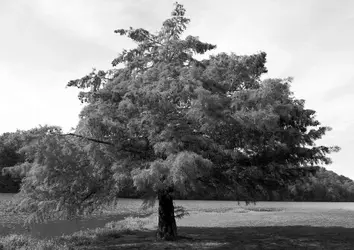Grandpa Ron
Been spending a lot of time on here!
- Joined
- Aug 9, 2018
- Messages
- 1,210
- Reaction score
- 753
- Can others edit my Photos
- Photos OK to edit
I have been chasing my tail trying to do a color to black and white conversion.
I am pretty much an "as shot" person so most of my b&w conversions are simply to desaturate and a few minor curve tweaks to improve the contrast and exposure but this one has me stumped. No pun intended.
I shot this old tree in color, so my first move was to desaturate. I notice the leaves were too light, almost like snow. So I adjusted the curve to improve the lighter sunlit shades but it still looked too bright. I have tried numerous other attempts including adding color filters to the color print then desaturating. They all looked artificial to me.
I am working with GIMP and beginning to wonder if I am trying to see in black and white, what is not there. Any suggestions would be welcome.



View attachment 179986 View attachment 179987
I am pretty much an "as shot" person so most of my b&w conversions are simply to desaturate and a few minor curve tweaks to improve the contrast and exposure but this one has me stumped. No pun intended.
I shot this old tree in color, so my first move was to desaturate. I notice the leaves were too light, almost like snow. So I adjusted the curve to improve the lighter sunlit shades but it still looked too bright. I have tried numerous other attempts including adding color filters to the color print then desaturating. They all looked artificial to me.
I am working with GIMP and beginning to wonder if I am trying to see in black and white, what is not there. Any suggestions would be welcome.



View attachment 179986 View attachment 179987
Last edited:











![[No title]](/data/xfmg/thumbnail/36/36666-189f65b1addbb68da2a43dc6f7206a01.jpg?1734169172)
